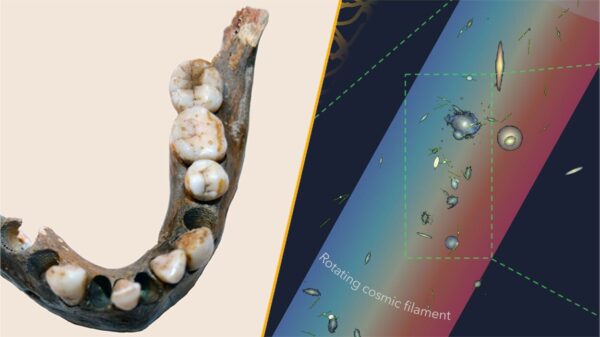A newly detected exoplanet, identified as GJ 251 c, located approximately 20 light-years from Earth, is generating excitement among scientists as it may offer one of the best opportunities yet in the search for extraterrestrial life. The discovery, made possible through advanced spectrographs developed at Penn State University and decades of astronomical observations, positions this super-Earth within the habitable zone of its star, suggesting it could harbor liquid water and, potentially, life.
The classification of GJ 251 c as a “super-Earth” stems from its estimated mass, which is nearly four times that of Earth, indicating it is likely a rocky planet. According to Suvrath Mahadevan, the Verne M. Willaman Professor of Astronomy at Penn State and co-author of a recent paper published in The Astronomical Journal, “We look for these types of planets because they are our best chance at finding life elsewhere.”
Two Decades of Research Culminate in Discovery
The breakthrough in identifying GJ 251 c followed over 20 years of meticulous observations aimed at locating planets capable of supporting liquid water. Mahadevan explained that this discovery marks a significant step forward in the effort to explore potentially habitable worlds. The team utilized data from the Habitable-Zone Planet Finder (HPF), a high-precision near-infrared spectrograph located on the Hobby-Eberly Telescope at McDonald Observatory in Texas. Penn State researchers played a key role in its design to enhance the search for Earth-like planets around nearby stars.
“This discovery represents one of the best candidates in the search for atmospheric signatures of life elsewhere in the next five to ten years,” Mahadevan noted, emphasizing the importance of GJ 251 c in future explorations.
The researchers detected a subtle gravitational “wobble” of the host star, GJ 251, caused by the gravitational influence of orbiting planets. This analysis relied on a combination of long-term data and new high-precision measurements from the HPF. The team first refined findings related to a previously known inner planet, GJ 251 b, which completes its orbit every 14 days. They then identified a stronger signal indicating the presence of the more massive GJ 251 c, with a periodicity of 54 days. Confirmation was bolstered by data from the NEID spectrometer, another instrument developed by Penn State researchers and operational at the Kitt Peak National Observatory in Arizona.
Challenges in Exoplanet Detection
Detecting exoplanets presents numerous challenges, particularly in differentiating a planet’s signal from the inherent magnetic activity of its host star. Mahadevan likened this activity to a form of stellar weather, where surface features can mimic signals produced by orbiting planets. To overcome this, the research team employed advanced modeling techniques that analyze how signals vary across different wavelengths of light.
“This is a hard game in terms of trying to beat down stellar activity as well as measuring its subtle signals,” Mahadevan explained. He emphasized that the successful detection of planets like GJ 251 c relies not only on sophisticated instruments but also on complex analyses and international collaboration. Such initiatives require substantial long-term funding and coordination, as meaningful discoveries often take years or decades to materialize.
“This discovery is a great example of the power of multi-disciplinary research at Penn State,” stated Eric Ford, a distinguished professor of astronomy and astrophysics at the university. He highlighted that the combination of cutting-edge instrumentation and tailored data science methods played a crucial role in realizing this significant finding.
Although current technology is unable to produce direct images of GJ 251 c, Mahadevan expressed optimism about the capabilities of upcoming telescopes to analyze its atmosphere. This could lead to the detection of chemical signatures indicative of life.
Looking Ahead: Future Exploration
As the scientific community prepares for the next generation of astronomical tools, Mahadevan emphasized the importance of engaging future students in groundbreaking research and developing new technologies for the detection of potentially habitable planets. GJ 251 c’s position makes it an attractive target for future observations, particularly with the anticipated advancements in telescope technology.
“While we can’t yet confirm the presence of an atmosphere or life on GJ 251 c, the planet represents a promising target for future exploration,” Mahadevan concluded. “We made an exciting discovery, but there’s still much more to learn about this planet.”
The research received support from the U.S. National Science Foundation, NASA, and the Heising-Simons Foundation, underscoring the collaborative effort in expanding our understanding of the universe and the quest for alien life.






































































